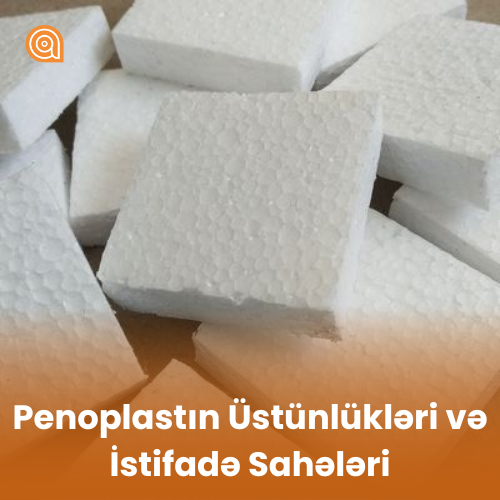Advantages and Uses of Styrofoam

What is Penoplast?
Main Composition of Penoplast
Penoplast is a type of lightweight, foam-like plastic made from polystyrene material. Its main component is expanded polystyrene (EPS), which provides it with exceptional structural lightness and durability.
Production Process of Penoplast
Penoplast is manufactured by expanding polystyrene granules under high temperature and pressure. This process gives the material superior thermal insulation and mechanical stability.
Advantages of Penoplast
- Thermal Insulation: Penoplast has excellent thermal insulation properties, helping save energy and reduce heat loss.
- Lightweight: Being lightweight, Penoplast is easy to transport and install.
- Durability: It is resistant to moisture, mold, and microorganisms, making it long-lasting.
- Environmental Safety: High-quality Penoplast does not emit toxic substances and is safe for the environment.
- Sound Insulation: Penoplast reduces sound transmission, creating a quieter indoor environment.
- Ease of Application: Penoplast can be easily cut and shaped for use in construction and decorative purposes.
- Affordability: Compared to other insulation materials, Penoplast is more cost-effective.
- Chemical Resistance: It is resistant to various chemicals and does not get damaged by their effects.
Applications of Penoplast
Construction and Insulation:
- Thermal insulation of walls, ceilings, and roofs.
- Floor insulation, especially in cold climates.
- Insulation and decorative finishing of facades.
Packaging Industry:
- Packaging for fragile items.
- Protection for electronics, household appliances, and other sensitive products.
Decorative Work:
- Creating advertising boards and 3D letters.
- Producing various elements for interior decoration.
Building Blocks and Panels:
- Producing lightweight structures.
- Manufacturing sandwich panels with high insulation properties.
Automotive Industry:
- Thermal and sound insulation in car interiors.
- Filling material for car seats and other components.
Boat and Shipbuilding:
- Used in boats and ships for its lightness and water resistance.
Household and Daily Use:
- Disposable cups, containers, and food packaging.
- Cushions with lightweight and insulating properties.
Agriculture:
- Insulating greenhouses and making plant containers.
Practical Tips for Using Penoplast
Choosing the Right Material
When selecting Penoplast, consider its quality and suitability for your needs.
Installation Process
Using proper tools during installation is crucial.
Maintenance and Longevity
Regular cleaning and maintenance ensure the material lasts longer.
Frequently Asked Questions About Penoplast
What is Penoplast and what material is it made of?
- Penoplast is a lightweight, insulating material made from polystyrene.
How effective is Penoplast for thermal insulation?
- Penoplast has excellent thermal insulation properties and is widely used to save energy.
Is Penoplast water-resistant?
- Penoplast does not absorb water and is resistant to moisture, but prolonged direct contact with water may damage its surface.
How is Penoplast cut?
- Penoplast can be easily cut using a knife, saw, or special heating devices.
Is Penoplast environmentally friendly?
- While Penoplast can be recycled, it is not biodegradable. Therefore, recycling methods are recommended for its disposal.
What sizes are available for Penoplast?
- Penoplast comes in various thicknesses and sizes. Custom sizes can also be ordered depending on the project.
How durable is Penoplast?
- It is resistant to external factors and provides long-term service when properly installed
